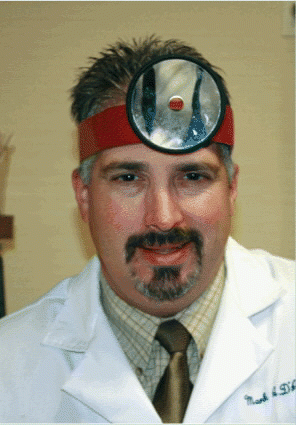Patients who complain of daytime sleepiness may have obstructive sleep apnea syndrome (OSAS), but otolaryngologists should not assume that OSAS is the sole or even the primary cause, according to experts here at the American Academy of Otolaryngology-Head and Neck Surgery (AAO-HNS) annual meeting. Primary insomnia, restless legs syndrome (RLS), or other sleep disorders may be the culprits instead, or may be present along with OSAS.
Explore This Issue
February 2009 The diagnosis of cataplexy is often delayed, and because the symptoms are sometimes very subtle, we may miss it, because some muscle groups are affected, while others are not. The important thing is to separate narcolepsy from idiopathic hypersomnia.
The diagnosis of cataplexy is often delayed, and because the symptoms are sometimes very subtle, we may miss it, because some muscle groups are affected, while others are not. The important thing is to separate narcolepsy from idiopathic hypersomnia.
-Mark A. D’Agostino, MD
The panel was organized by the Sleep Disorders Committee of AAO-HNS to educate otolaryngologists on sleep disorders beyond OSAS, said Mark A. D’Agostino, MD, Clinical Instructor of Otolaryngology at the Yale University School of Medicine in Stamford, CT, and Assistant Professor of Surgery at the Uniformed Services University of Health Science in New Haven, CT.
Otolaryngologists are often not aware of other sleep disorders such as insomnia, restless legs syndrome, and narcolepsy, he said. We wanted to educate them about other areas of sleep medicine that do not involve sleep-disordered breathing.
Narcoleptic Patients Often Have Cataplexy as Well
For example, in his presentation on narcolepsy, Dr. D’Agostino discussed the genetic and environmental factors that play a role in this condition, which is characterized by sudden onset of sleep in inappropriate places, such as while driving and at work. A high percentage of patients with narcolepsy also have cataplexy, Dr. D’Agostino said. Cataplexy is characterized by complete or partial loss of muscle tone, and often occurs when the patient is experiencing strong emotions. Episodes of cataplexy are usually short-lived.
The diagnosis of cataplexy is often delayed, and because the symptoms are sometimes very subtle, we may miss it, because some muscle groups are affected, while others are not, Dr. D’Agostino said. The important thing is to separate narcolepsy from idiopathic hypersomnia.
Once narcolepsy has been diagnosed, concomitant cataplexy is also easier to target. It’s important to get the correct diagnosis so that patients can get the correct medications, Dr. D’Agostino said.
Genetics research on narcolepsy and cataplexy is focused on human leukocyte antigens (HLA) subtyping. The research shows a strong association of the genes DBQ1*0601 and DQA1*0102 with both of these conditions, he said. However, he stressed that having these genes is not a definitive diagnosis. Genetic typing is better at ruling these conditions out rather than confirming them.
Narcolepsy can develop in patients as young as two years old. The peak incidence is in the second decade of life, with a second peak in people 35 to 45 years old and in women near menopause.
A diagnosis of narcolepsy can be made if the patient has a history of excessive daytime somnolence (EDS) that has lasted for longer than three months and has a multiple sleep latency test (MSLT) of eight minutes or less. A polysomnogram can be used to further confirm the diagnosis.
Treatment is typically both behavioral and medical. Patients with narcolepsy should, for example, avoid jobs that involve constant attention, such as driving, for the purpose of safety. Patients can often get relief with short naps in the daytime, typically 15 minutes in duration.
Medications for narcolepsy target EDS and include central nervous system stimulants such as amphetamines, methylphenidate, and, more recently, modafinil (Provigil).
Cataplexy has been treated by antidepressants. A newer medication targeting cataplexy is gamma-hydroxybutyrate, a naturally occurring metabolite of gamma-aminobutyric acid that has a low profile of adverse effects. Gamma-hydroxybutyrate can treat cataplexy and EDS, Dr. D’Agostino said.
 Patients with RLS will frequently complain of sleep-onset insomnia or difficulty in falling back to sleep after waking up. I routinely ask patients if they have problems with an uncomfortable feeling in the leg. That question will usually identify patients who have RLS.
Patients with RLS will frequently complain of sleep-onset insomnia or difficulty in falling back to sleep after waking up. I routinely ask patients if they have problems with an uncomfortable feeling in the leg. That question will usually identify patients who have RLS.
-Kevin McLaughlin, MD
One of the important issues otolaryngologists need to know about narcolepsy and cataplexy is the high incidence of hypnopompic and hypnagogic hallucinations, Dr. D’Agostino said. Hypnagogic hallucinations occur with the onset of sleep and hypnopompic hallucinations occur upon awakening. When a patient with cataplexy also has such hallucinations, it can be very frightening, because they typically will reach wakefulness and some hallucinations while also experiencing sleep paralysis.
RLS Can Worsen Insomnia in Patients with OSAS
RLS is a common disorder that can wreak havoc on sleep, according to panelist Kevin McLaughlin, MD, Assistant Professor of Rhinology, Sleep, and Sinus Surgery at Louisiana State University in New Orleans. RLS is characterized by an unpleasant desire to move the legs, typically while sedentary and most intensely at night. Most patients also have periodic limb movements of sleep disorder (PLMSD), which consists of a higher rate of PLMS than occurs in healthy patients; PLMSD therefore often disrupts the bed partner’s sleep as well.
Otolaryngologists should find RLS of interest because it is highly prevalent in the population and therefore often seen in patients with sleep-disordered breathing, Dr. McLaughlin said. The incidence of RLS approaches 7 percent; therefore, it is reasonable to assume that we will see it in patients with obstructive sleep apnea.
Patients with OSAS who also have undiagnosed RLS will continue to have insomnia and EDS symptoms despite adequate treatment with continuous positive airway pressure (CPAP), he said. Further, not diagnosing RLS patients before a sleep study might decrease the effectiveness of the study because the patient may be unable to sleep due to RLS symptoms, he added. If the patient is having excessive limb movements, he or she may not be able to get into full stages of sleep, and you may not get as good an assessment of the sleep disorder as you could otherwise.
With all sleep disorder patients, otolaryngologists may find it helpful to ask about the patients’ sleep hygiene when obtaining the history, he said. The physician should ask when the patient goes to sleep and wakes up, and whether he or she has trouble falling asleep, staying asleep, or both. Patients with RLS will frequently complain of sleep-onset insomnia or difficulty in falling back to sleep after waking up, he said. Because of the prevalence of RLS, I routinely ask patients if they have problems with an uncomfortable feeling in the leg. That question will usually identify patients who have RLS.
An RLS diagnosis does not require polysomnography, he said. If the history includes an uneasy feeling in the legs, a sensation of restlessness that is worse in the evening, improved with activity, and made worse by inactivity, the diagnosis can be made. If you have a patient with RLS, identify and treat the condition prior to sleep study for sleep-disordered breathing, he said. Some of the medications typically used are dopaminergic agents such as pramipexole (Mirapex) and ropinirole (Requip).
Knowing about non-OSAS sleep disorders will help otolaryngologists have a complete understanding of sleep medicine, according to Jordan S. Josephson, MD, Director of the New York Nasal and Sinus Center, who was not on the panel. He pointed out that OSAS still needs to be identified and managed.
OSAS is one of largest reasons for fatigue that leads to automobile accidents, and is associated with heart disease and stroke, he said. Dr. Josephson agreed with the panelists that comprehensive treatment is necessary when an OSAS patient has multiple sleep disorders. When you identify problems [or] obstructions contributing to sleep apnea, then treat them all, not just one, as [treating only one] will lead to failure. Furthermore, the treatment in vogue that week may not be the procedure that your particular patient requires, so accurate diagnosis and targeted therapy is key to success in relieving the OSAS.
©2009 The Triological Society
Leave a Reply